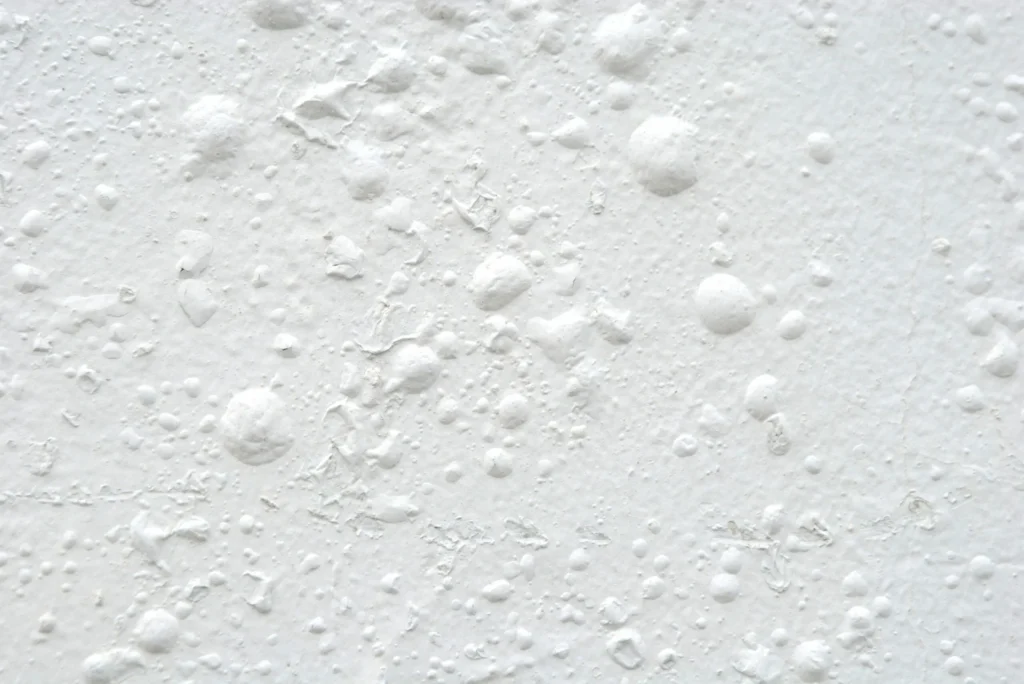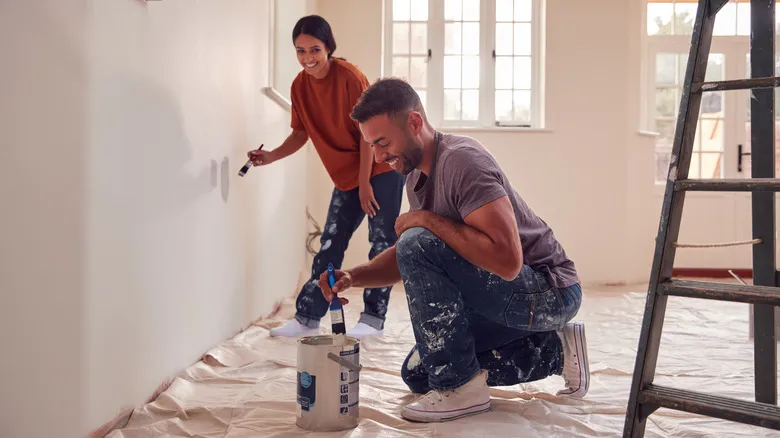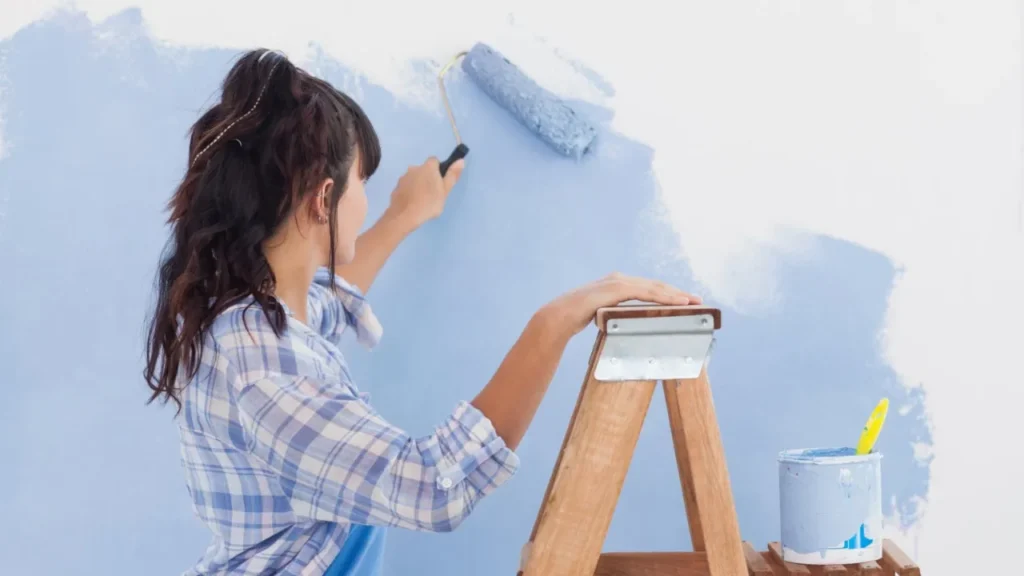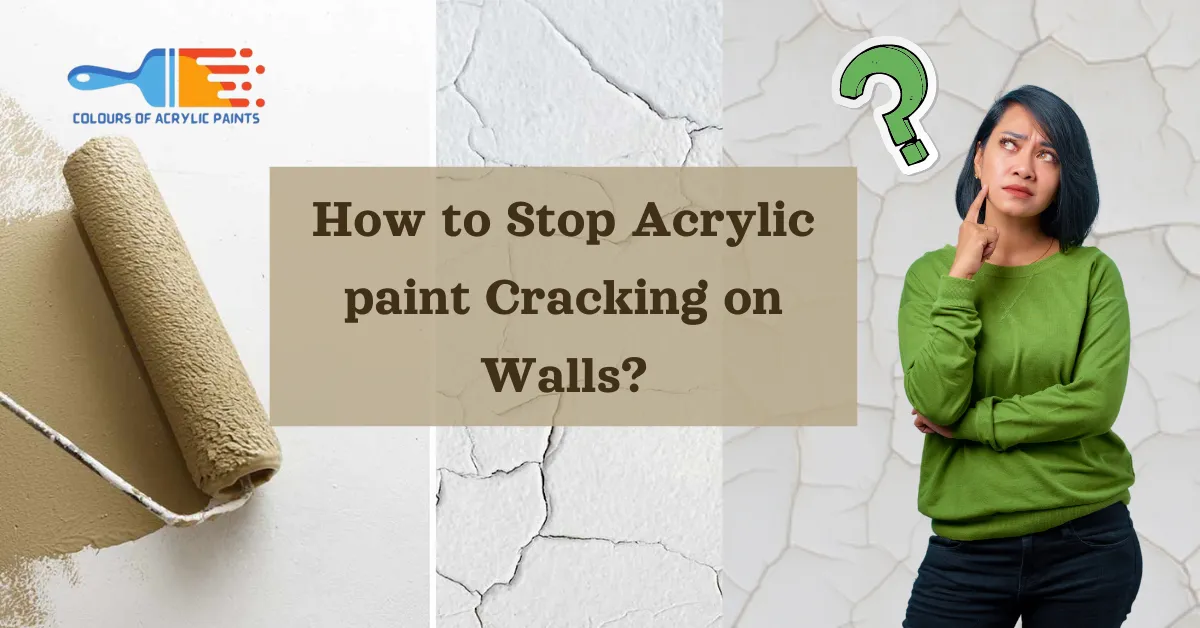Acrylic paint cracking on walls can be a frustrating issue for many homeowners, but understanding the root cause is the key to preventing this problem. In this article, we will explore the common causes of acrylic paint cracking on walls and find how to stop acrylic paint cracking on walls.

Cause of Acrylic Paint Cracking on walls
Poor surface preparation
One of the primary culprits behind acrylic paint cracking is poor surface preparation. Applying acrylic paint over a dirty, uneven, or inadequately primed surface can lead to premature cracking and flaking.
When the wall is not properly cleaned, primed, or stripped of previous paint or coatings, the adhesion of the new acrylic paint can be compromised. This leads to eventual cracking as the paint fails to bond securely with the wall surface.
Moisture in the walls
Excessive moisture in the walls can also contribute to this issue, as it causes the paint to lose adhesion and crack over time.
Temperature and Humidity Fluctuations
Another key cause of acrylic paint cracking is extreme fluctuations in temperature and humidity. These fluctuations can cause expansion and contraction of the wall material, putting stress on the paint film.
Over time, this stress can lead to cracks in the acrylic paint, especially if it has not been formulated to withstand such environmental changes.

Low-Quality Paint Products
Using low-quality or incompatible paint products can also contribute to acrylic paint cracking on walls. It’s essential to use high-quality paints specifically designed for interior or exterior surfaces, depending on where they will be applied.
Using paints that are not compatible with other coatings or surfaces already present on the wall can result in poor adhesion and ultimately lead to cracking issues.
Insufficient drying
applying too many layers of thick acrylic paint without allowing sufficient time for each layer to dry completely can create internal stress within the coating, ultimately resulting in cracks on the wall’s surface.
Incorrect application techniques
Using incorrect application techniques such as overworking brush strokes or roller marks may lead to uneven distribution of the paint and eventual cracking. Understanding these main causes of acrylic paint cracking on walls can help painters and homeowners take preventive measures and ensure long-lasting results.
Read also about Best Acrylic Spray Paint
Effects of Acrylic paint cracking on walls
Unattractive patchwork on Walls
The visual appeal of a room can be greatly diminished by the unsightly effect of acrylic paint cracking on walls. Cracks can disrupt the smoothness and uniformity, creating an unattractive patchwork that detracts from the overall aesthetic.
This can be particularly frustrating for homeowners who have invested time and effort into painting their walls, only to see their hard work marred by this phenomenon.
Undermine the structural integrity of walls
In addition to its impact on appearance, acrylic paint cracking can also undermine the structural integrity of walls. As cracks deepen and widen over time, they compromise the protective barrier that paint provides against moisture and other environmental factors.
This can lead to more serious issues such as water damage, mold growth, and even structural instability if left unchecked. These potential consequences highlight the importance of addressing paint cracking promptly to maintain both the visual appeal and structural soundness of interior spaces.

Negatively affect psychological well-being
The presence of cracked paint may subconsciously convey a lack of maintenance or care, leading occupants to feel unsettled or uncomfortable in their own homes.
It is important for individuals to recognize not only the physical implications but also the emotional toll that cracked paint can take on their living spaces.
Process to Stop Acrylic Paint Cracking on Walls
Clean Walls
To prevent cracking, start by ensuring the surface is clean and free from any dust or debris.
Apply High Quality Primer
Applying a high-quality primer can also help to create a strong bond between the paint and the wall, reducing the risk of cracking.
Add Medium to Acrylic Paint
Adding a flexible medium to the paint can enhance its elasticity, allowing it to withstand environmental changes without cracking.
Apply thin layers of Paint
Another effective way to keep acrylic paint from cracking is to apply thin layers and allow each coat to fully dry before adding another. This method helps prevent stress on the paint as it dries and minimizes the potential for cracks to form.
Use high Quality Paint
Using top-quality acrylic paints that are specifically formulated for walls can significantly reduce the likelihood of cracking issues down the line.
By taking these steps into account, you can safeguard your painted walls against unsightly cracks while also ensuring a long-lasting and professional-looking finish.

See also about Best acrylic paint thinner.
Tips to Stop Acrylic paint Cracking on Walls
Following are some important tips to stop acrylic paint cracking on walls
- Ensure that the surface being painted is clean and free of any dust or debris.
- Use a good quality primer can make a significant difference in preventing cracking.
- It’s also important to apply the paint evenly and not too thickly, as excessive buildup can lead to cracking over time.
- Another key tip is to choose high-quality acrylic paint specifically designed for interior walls. Cheaper, lower-quality paints are more prone to cracking due to their inferior ingredients and lack of flexibility.
- Adding a conditioner or extender to the paint can enhance its durability and flexibility, reducing the likelihood of cracks forming.
- Proper ventilation and temperature control during painting and drying processes can also contribute to preventing acrylic paint from cracking on walls.

How long does acrylic paint last on walls?
It depends on quality of the paint and the condition of the wall. High-quality acrylic paint, applied to a properly prepared surface, can last for many years without significant fading or deterioration. Factors such as exposure to harsh sunlight, moisture, and frequent cleaning can affect the longevity of acrylic paint on walls.
To ensure the longevity of acrylic paint on your walls, it’s crucial to invest in high-quality paint and proper surface preparation.
Using a protective sealer or top coat can provide an extra layer of defense against wear and tear. Regular maintenance such as gentle cleaning and avoiding abrasive materials can also help extend the lifespan of acrylic painted walls. By taking these steps, you can enjoy vibrant and durable acrylic paint on your walls for years to come.
Summary
To stop acrylic paint cracking on walls involves careful surface preparation, the use of high-quality paint and proper application techniques.
By ensuring that the wall is clean, dry, and free of any previous coatings or imperfections, you can create a stable base for the paint to adhere to. Using a flexible acrylic paint specifically designed for interior walls can help minimize the risk of cracking.
Applying multiple thin coats rather than one thick layer and allowing sufficient drying time between coats can also contribute to a more durable finish.
By following these steps and taking necessary precautions, you can effectively stop acrylic paint from cracking on walls and maintain a beautiful, long-lasting appearance in your home.

